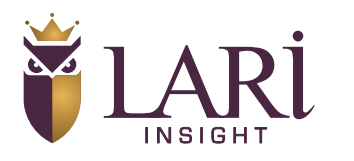Understanding Term Life Insurance: A Guide for Canadians
When it comes to life insurance in Canada, term life insurance is a foundational option to consider. It’s straightforward and often a more affordable choice for those who are new to life insurance. In this article, we will demystify term life insurance, making it easy for you to understand how it fits into your financial planning.
What is Term Life Insurance?
Term life insurance is a policy where coverage is provided for a predetermined period, usually 10, 20, or 30 years. You pay a fixed premium during this term. If you pass away within the term, your beneficiaries receive a death benefit. If you outlive the term, the policy expires without any payout.
Benefits of Term Life Insurance
Here are some key advantages:
- Cost-Effective: Term life insurance typically offers more coverage for lower premiums, especially appealing for younger individuals or those with a limited budget.
- Straightforward: This insurance type is uncomplicated. You select the amount of coverage and the term length, pay the premiums, and your coverage is in place. There are no complex investment components to understand.
- Flexible: You have the freedom to choose a term that aligns with your specific needs, such as the duration of your mortgage or until your children are financially independent.
However, keep in mind that once the term ends, so does your coverage. If you still need insurance after that, you will need to purchase a new policy, potentially at a higher cost due to increased age or changes in health.
Ideal Candidates for Term Life Insurance
This type of insurance is particularly well-suited for:
- Canadian individuals or families looking for significant coverage without a high cost.
- Those with specific, time-bound financial obligations, like a mortgage or obligations from a separation or divorce.
Term life insurance can be a valuable part of your financial strategy, particularly if you’re looking for a simple, affordable way to protect your family’s financial future or cover specific debts. It’s an essential tool that offers peace of mind during the policy term.
In summary, while term life insurance may not cover all scenarios, it serves as an effective and economical way to provide financial security for a set period. It’s a practical starting point for those new to life insurance or those with specific, time-bound financial goals.
Understanding Permanent Life Insurance: Navigating Long-Term Security in Canada
Unlike term life insurance, which provides coverage for a specific period, permanent life insurance offers lifelong protection. This article aims to clarify the features and benefits of permanent life insurance to help you determine if it aligns with your financial goals.
What is Permanent Life Insurance?
Permanent life insurance is a policy that provides coverage for your entire life. It not only pays out a death benefit to your beneficiaries but also includes a cash value component, which can grow over time. Types of permanent life insurance include Whole Life and Universal Life, each with unique features to suit different needs.
Advantages of Permanent Life Insurance
Permanent life insurance offers several key benefits:
- Lifelong Coverage: As the name suggests, permanent life insurance protects you for your entire life. This means your beneficiaries are guaranteed a death benefit, regardless of when you pass away.
- Cash Value Accumulation: A portion of your premium goes into a cash value account, which grows tax-deferred over time. This can be used as a financial tool later in life, such as borrowing against the policy or even withdrawing a portion under certain conditions.
- Potential Dividends: Some whole life policies pay dividends, which can be used to increase the death benefit, reduce premiums, or even taken as cash.
- Fixed Premiums: While premiums are generally higher than term life insurance, they are fixed and do not increase as you age.
However, the complexity and higher cost of permanent life insurance compared to term life make it essential to carefully consider whether it aligns with your financial situation and goals.
Who Benefits Most from Permanent Life Insurance?
Permanent life insurance is particularly beneficial for:
- Canadian individuals seeking lifelong coverage and financial security for their beneficiaries.
- Those interested in an insurance product that also serves as a long-term investment or savings tool.
- People looking for estate planning tools, as the death benefit can be used to provide liquidity for estate taxes or other expenses.
Permanent life insurance is more than just a death benefit; it’s a versatile financial tool that can play a significant role in your long-term financial planning process. Its ability to provide lifelong coverage, coupled with the cash value component, makes it a robust option for those looking to combine insurance with investment opportunities.
Comparing Term and Permanent Life Insurance: Making the Right Choice in Canada
When it comes to choosing the right life insurance in Canada, understanding the differences between term and permanent life insurance is crucial. Both types offer unique benefits and cater to different financial needs and goals. This section aims to provide a clear comparison, helping you make an informed decision about which type of insurance is best suited for your situation.
Key Differences Between Term and Permanent Life Insurance
Here’s a quick comparison of the primary features of each type:
- Coverage Duration:
- Term Life: Coverage is limited to a specific term (e.g., 10, 20, or 30 years).
- Permanent Life: Coverage lasts for your entire life.
- Premium Costs:
- Term Life: Generally lower premiums, especially when purchased at a younger age.
- Permanent Life: Higher premiums, but they do not increase with age.
- Cash Value:
- Term Life: No cash value component.
- Permanent Life: Accumulates cash value over time, which can be borrowed against or withdrawn under certain conditions.
- Flexibility and Complexity:
- Term Life: Simple and straightforward, with no investment component.
- Permanent Life: More complex, with options for investment and savings through the cash value.
Factors to Consider When Choosing
When deciding between term and permanent life insurance, consider the following:
- Financial Goals and Needs: Are you looking for short-term protection or a long-term financial strategy?
- Budget: What can you afford in terms of premiums now, and how might this change in the future?
- Future Financial Planning: Do you need an insurance product that can also serve as an investment or savings tool?
Both term and permanent life insurance have their places in financial planning. Term life insurance is often suitable for those with a defined need for protection over a specific period, such as covering a mortgage or providing for a family while children are still dependent. On the other hand, permanent life insurance is more suited for those seeking lifelong coverage and a tool for wealth accumulation or estate planning.
Regardless of which type of life insurance product you choose, it’s essential to obtain enough insurance coverage for your specific needs. Use our Canadian Life Insurance Calculator to assess your assets, debt, and the needs of your dependents and arrive at a recommended level of coverage. For more detailed information and guidance, consider exploring resources from the Canadian Life and Health Insurance Association and the Insurance Bureau of Canada. Consulting with a financial advisor is also highly recommended to ensure you choose a policy that aligns with your unique financial situation and goals.



